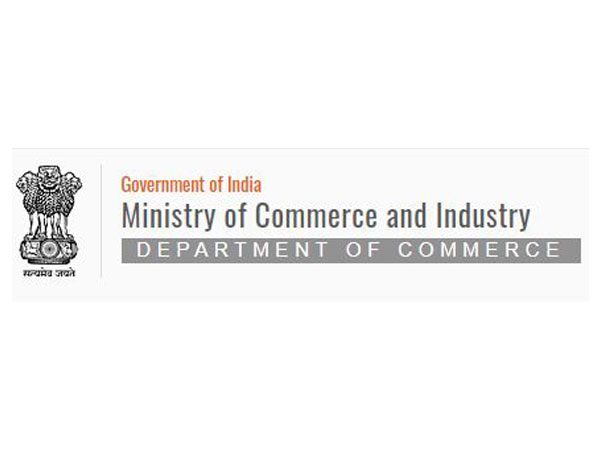India Eases SEZ Rules to Boost Semiconductor, Electronics Manufacturing Drive
By removing key regulatory bottlenecks, the changes are expected to significantly enhance ease of doing business for global and domestic technology players in the sector.

- Country:
- South Africa
In a decisive move to catalyze high-tech manufacturing and attract pioneering investments in critical technology sectors, the Government of India has amended the Special Economic Zones (SEZ) Rules, 2006. The reforms are aimed at addressing the unique capital-intensive, import-dependent, and long-gestation characteristics of the semiconductor and electronic components manufacturing sectors.
These amendments, notified by the Department of Commerce on June 3, 2025, signal a strategic policy shift to facilitate the growth of India's semiconductor ecosystem and align with the government’s larger Make in India and Atmanirbhar Bharat objectives. By removing key regulatory bottlenecks, the changes are expected to significantly enhance ease of doing business for global and domestic technology players in the sector.
Key SEZ Rule Amendments: Paving the Way for High-Tech Investment
1. Minimum Land Requirement Reduced
One of the most impactful changes comes in Rule 5, which now allows the establishment of SEZs dedicated exclusively to semiconductors and electronic components with a minimum contiguous land area of just 10 hectares, a steep drop from the earlier requirement of 50 hectares. This change reflects an understanding of the sector’s specific spatial and investment dynamics, encouraging more players to set up specialized SEZs.
2. Flexibility in Land Ownership Conditions
The amended Rule 7 offers greater flexibility in SEZ land ownership. The earlier requirement for the land to be strictly encumbrance-free has been eased. Now, land mortgaged or leased to the Central/State Government or their authorized agencies will be considered valid for SEZ development. This provision is expected to unlock vast tracts of land that were previously ineligible, expediting the setup of high-tech units.
3. Inclusion of Free-of-Cost Goods in NFE Calculations
Through an amendment in Rule 53, the government now permits the value of goods received and supplied free of cost to be included in Net Foreign Exchange (NFE) computations. These values will be assessed using the applicable customs valuation rules. This reform simplifies export accounting and supports firms involved in complex, collaborative supply chains—common in semiconductor and electronics manufacturing.
4. Domestic Market Access for SEZ Units
In a significant shift, Rule 18 now permits SEZ units in the semiconductor and electronics component sectors to sell their products in the Domestic Tariff Area (DTA) after paying the applicable duties. This dual access—global and domestic—enhances the commercial viability of SEZ units and ensures that Indian consumers and industries benefit directly from locally manufactured high-end components.
First-Mover Approvals: Micron and Aequs to Establish New SEZs
The reforms have already begun yielding results. The Board of Approval for SEZs, in its first set of approvals following the new rules, has given the green light to two major proposals:
-
Micron Semiconductor Technology India Pvt. Ltd. (MSTI) Micron will establish a semiconductor manufacturing SEZ in Sanand, Gujarat on a 37.64-hectare plot. The project entails a massive investment of ₹13,000 crore, reinforcing India’s position in the global semiconductor value chain. Sanand is emerging as a technology manufacturing hub, and this facility will be central to India’s chip manufacturing ambitions.
-
Hubballi Durable Goods Cluster Pvt. Ltd. (Aequs Group) Aequs will set up its SEZ in Dharwad, Karnataka on an 11.55-hectare land parcel, with an initial investment of ₹100 crore. The facility will focus on electronic component manufacturing, supporting a broader electronics supply ecosystem in South India.
These early approvals underscore the private sector's confidence in the new regulatory framework and the government's commitment to building a future-ready, globally competitive electronics manufacturing ecosystem.
Why These Reforms Matter: Strategic Implications for India
1. Building a Self-Reliant Semiconductor Ecosystem
Semiconductors are the backbone of digital infrastructure, from smartphones and automobiles to AI and defense technologies. With global chip shortages highlighting the fragility of supply chains, India's reforms represent a proactive effort to secure its strategic technology autonomy.
2. Creating High-Skilled Employment Opportunities
Both projects—Micron and Aequs—are expected to create thousands of direct and indirect high-skilled jobs, not only in manufacturing but also in research, engineering, and supply chain management.
3. Attracting Global Investments
The relaxed SEZ rules are expected to attract global giants and startups alike, positioning India as a competitive alternative to traditional semiconductor hubs in East Asia and the U.S.
4. Regional Economic Development
The establishment of SEZs in Gujarat and Karnataka will accelerate industrial growth in these states, enhance exports, and foster regional innovation clusters.
A Future-Ready India
The amended SEZ framework is a bold step toward achieving India's ambition to become a global manufacturing powerhouse in semiconductors and electronics. As the global industry seeks diversification and resilient supply chains, India’s policy clarity, investor-friendly reforms, and robust digital infrastructure make it an attractive destination for next-generation manufacturing.
With a visionary approach and sustained government backing, India’s journey from a large electronics consumer to a formidable producer is now firmly underway.










